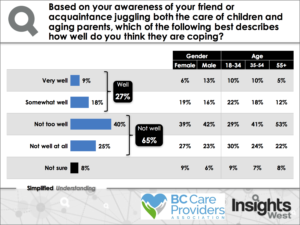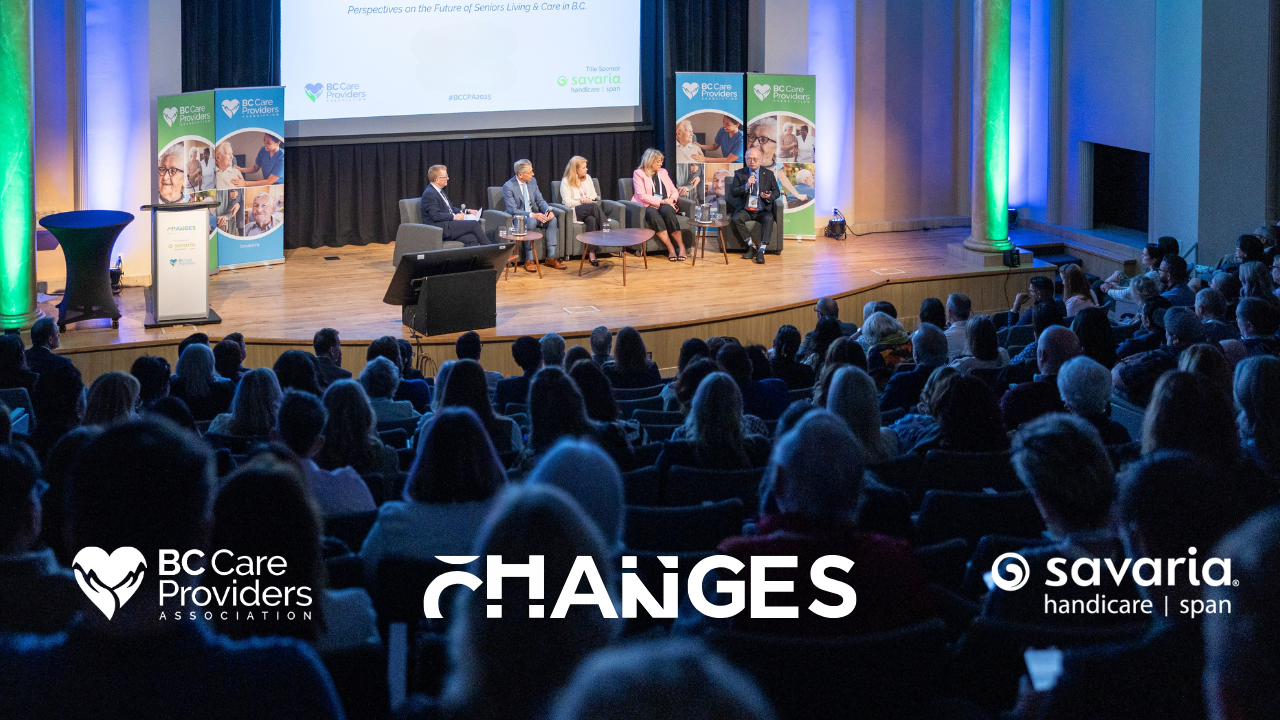Image source: Okanagan Life
A new province-wide poll conducted by Insights West reveals 9-in-10 British Columbians who form part of the “sandwich generation” report they are experiencing a range of challenges in providing care. The “sandwich generation” is defined as someone juggling both the needs of their children and aging parents at the same time.
News Release (PDF)
Poll Factum (PDF)
Poll Tables (Excel)
Poll Graphic
Sandwich Generation Backgrounder
More than half of respondents say they have difficulty in finding time to visit their aging parents due to work/busy schedules (64%). Majorities also report challenges in keeping informed about the health status of a parent (60%) and affording the costs associated with caring (56%).
Almost half of British Columbians who do not identify as part of the ‘sandwich generation’ (48%) indicate they know someone in their personal network who is part of that cohort. According to Statistics Canada, an average of 3-in-10 Canadians are both raising children and responsible for the care of their elderly parents.
“The poll results certainly confirm what most of us have been hearing in our social circles and at community functions for a while now,” says Daniel Fontaine, CEO for the BC Care Providers Association. “As our population rapidly ages, a significant number of British Columbians currently deal with or are facing the prospect of becoming part of the ‘sandwich generation’ at some point soon.”

British Columbians who are not part of the “sandwich generation” but know someone who is, were asked how their friends and acquaintances were managing the situation. A majority (65%) said they were coping “not too well” or “not well at all”. More than half (56%) of respondents who are not part of the “sandwich generation” also report they are “not too confident” or “not confident at all” that adequate seniors care will be there when they need it.
“Notwithstanding the fact we have an excellent seniors care system in British Columbia, there is clearly the need for us to make targeted investments and implement new innovations,” says Fontaine. “When we invest in providing adequate care for our seniors, there is a direct benefit to their families as well,” says Fontaine.
The BC Care Providers Association is set to release a major report next week which incorporates a series of recommendations stemming from the publication of two major White Papers last spring.
Additional Polling Questions & Responses
1. Over the course of the next ten years, do you anticipate taking care of both a child (under 19 years of age) and an elderly parent?
- Three-in-ten respondents (29%) anticipate taking care of both in the next ten years, with a higher proportion observed among those aged 18-34 (48%) and Metro Vancouverites (35%).
2. As a person who is currently taking care of a child (under 19 years of age) and a parent, are you experiencing any of the challenges described below? Please select all that apply.
- More than half of respondents say they have difficulty in finding time to visit due to work/busy schedules (64%), keeping informed about the health status of a parent (60%) and affording the costs associated with caring for an aging parent (56%).
- Fewer than half of respondents also mention long wait lists to access a care home or for home care (40%), difficulty getting access to a care home located close to where you live (36%) and inadequate access to a care home for seniors (28%).
3. In reference to the upcoming provincial election, will the development of a comprehensive plan to address the aging population impact the way you vote?
- About three-in-five British Columbians (58%) say this plan will influence the way they vote, including 70% of those aged 55 and over
Methodology
Results are based on an online study conducted by Insights West from January 9 to January 12, 2016, among 1,205 adult British Columbians, including 441 who are currently providing care for both a child (under 19 years of age) and an elderly parent. The data has been statistically weighted according to Canadian census figures for age, gender and region. The margin of error—which measures sample variability—is +/- 2.8 percentage points for the entire sample.






